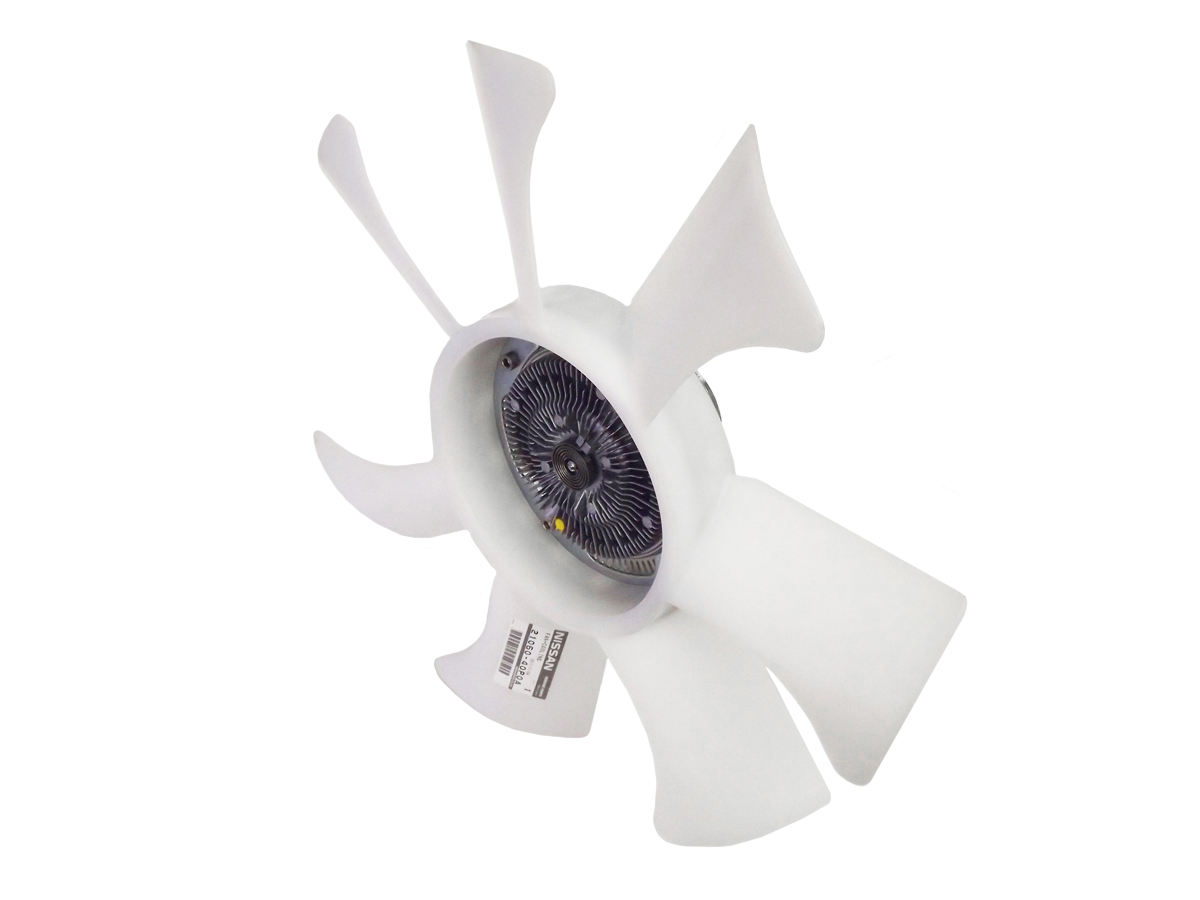Fan Blades Fundamentals Explained
Table of ContentsThe 30-Second Trick For Fan BladesFascination About Fan BladesGetting The Fan Blades To Work
Non-thermal clutches run entirely based on the shaft speed of the water pump. At low and idling speeds, the clutch enables the fan blade to turn at practically a 1:1 ratio. At high speeds, the silicone fluid within in the clutch will lose its capability to move the energy from the shaft to the fan clutch body (and for that reason, the fan) and the fan is then permitted to almost free-wheel, removing its load from the engine.Nevertheless, non-thermal clutches are a lower-cost option than thermal-style clutches. The thermal fan clutch operates in response to underhood temperature levels. As hot air blows across the radiator, it heats a thermal spring mounted at the front of the clutch. As the spring is warmed, it turns and allows valve ports to open within the clutch.
This engages the clutch and drives the fan. Once the engine is cooled down, the thermal spring rotates back and closes the valve ports, disengaging the fan. The speed at which a thermal fan clutch spins a fan depends largely on the precise fan you pick. On the Summit Racing website, for instance, you'll discover three various types of thermal fan clutches from Hayden alone: This design turns the fan at 60-70 percent of the water pump shaft speed when engaged, and 20-30 percent when disengaged.
This fan style turns the fan at 70-90 percent of the shaft speed when engaged for increased cooling. When disengaged, it turns the fan at 25-35 percent. It's used with deeper-pitch fans (2Â 1/2 of pitch), and works well with higher operating rpm. Extreme responsibility thermal fans turn the fan at 80-90 percent of the shaft speed when engaged and 20-30 percent when disengaged.
This design of fan clutch runs like a thermal clutch, however the ECM/PCM signal controls the level of engagement of the EV clutch. This engagement process is ultimately managed through the ECM/PCM by the following input variables: Coolant Temperature, Consumption Manifold Temperature Level, Transmission Oil Temperature Level, A/C Pressure and Engine Oil Temperature Level.
Like all components, fan clutches will use out and require changed. fan blades. According to Hayden, here are some indications your fan clutch might require changed: Fan spins exceedingly when engine is stopped (three or more times when hot engine is turned off). Poor A/C efficiency at idle or low vehicle speeds.
The Facts About Fan Blades Revealed

Fan speed does not increase till engine is exceedingly hot. Fan blade suggestion moves more than 1/4-inch front to back. Fan turns approximately or does not turn at all. Extreme fan noise at all speeds due to failed bearing. Vibration that increases with engine speed. Dripping fluid or oily develop around the bearing or thermal spring.
289, 302, W/ FAN CLUTCH EMPLOYER 302, W/ FAN CLUTCH 250, W/ FAN CLUTCH W/ FAN CLUTCH, REPLACEMENT 289, FACTORY A/C AND FAN CLUTCH 289, DELUXE DEALER A/C 200, FACTORY A/C, POWER FAN, W/O EMISSIONS FAIRLANE, TORINO, 200, A/C, POWER FAN, W/ EMISSIONS: This product can expose you to chemicals consisting of lead and DEHP, which are known to the State of California to cause cancer and abnormality or other reproductive damage.

Nearly unprecedented on modern vehicles with electrical engine cooling fans, people sometimes still refer to the accessory drive belts as "fan belts." This term harkens to the day when cars and trucks and trucks utilized drive belts to drive the cooling fan or water pump. The engine cooling fan, made of plastic or metal, isn't hard-connected to the fan pulley or water pump, however instead is soft-connected by means of the fan clutch.
A failing fan clutch could leave you stranded with pricey repair work bills, so take note of these symptoms. Here, you can see where the fan and fan clutch are driven by the engine (fan blades). Morio/ Wikimedia Commons There are three kinds of fan clutch, depending on the lorry's style. A percentage of resistance constantly keeps the fan spinning, however it's basically free-wheeling till the fan clutch engages.

Not known Facts About Fan Blades
A centrifugal valve opens to allow the flow of heavy silicone fluid, locking the fan blades to find out here now the pulley. At idle and low engine speeds, this fan clutch is fully engaged, gradually disengaging as engine speed boosts. Depending on the application, it may freewheel above 2,500 to 3,000 rpm. An functions similar check over here to thermal and torque-limiting types but isn't regulated directly by temperature or speed.
If the fan clutch is spoiling or has actually failed, there are a couple of methods you may observe. Focusing on your automobile is the primary step in a precise medical diagnosis, effective repair work, and trustworthy automobile. at low speed or when stopped is the most-common fan clutch failure sign.
At a stop, however, due to the fact that the fan clutch doesn't engage and air isn't forced through the radiator, the engine can't dissipate excess heat. in winter is another common issue but brought on by the opposite fan clutch failure. If the fan clutch seizes, it remains engaged all the time, cooling off the engine excessive.
This can trigger bearing damage, radiator damage if the blades bend too useful reference far, or perhaps shatter a plastic fan. after engine shut-down might show a weak clutch. Silicone fluid dripping from the fan clutch would trigger this problem. When the engine is off, there are a few things you can do to examine the fan clutch:. fan blades.